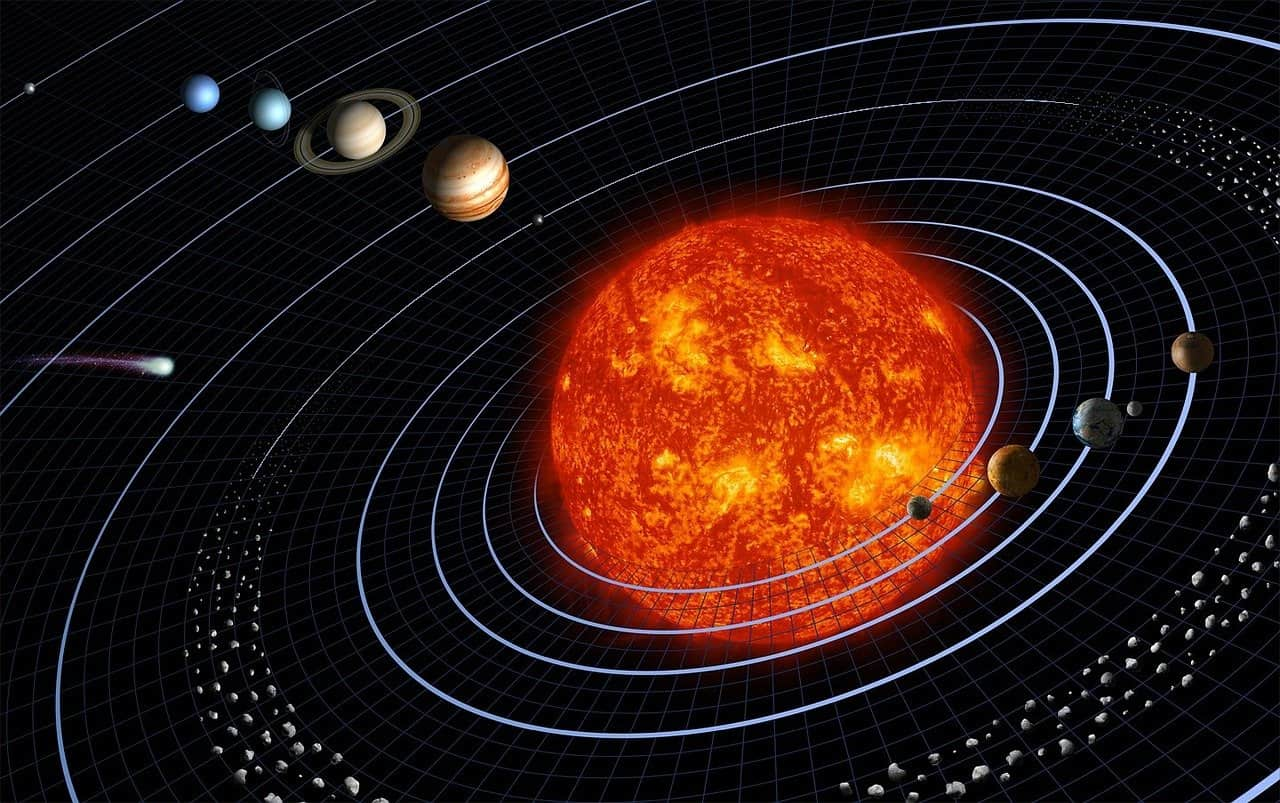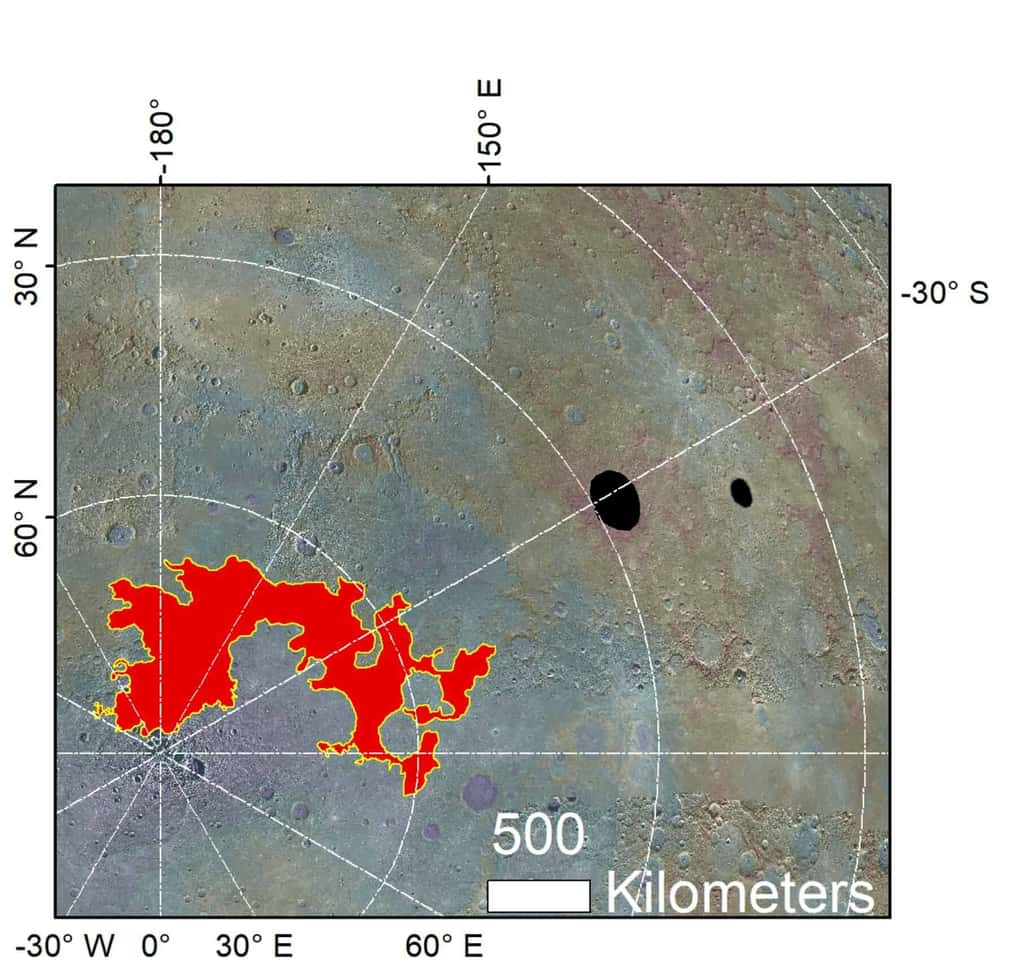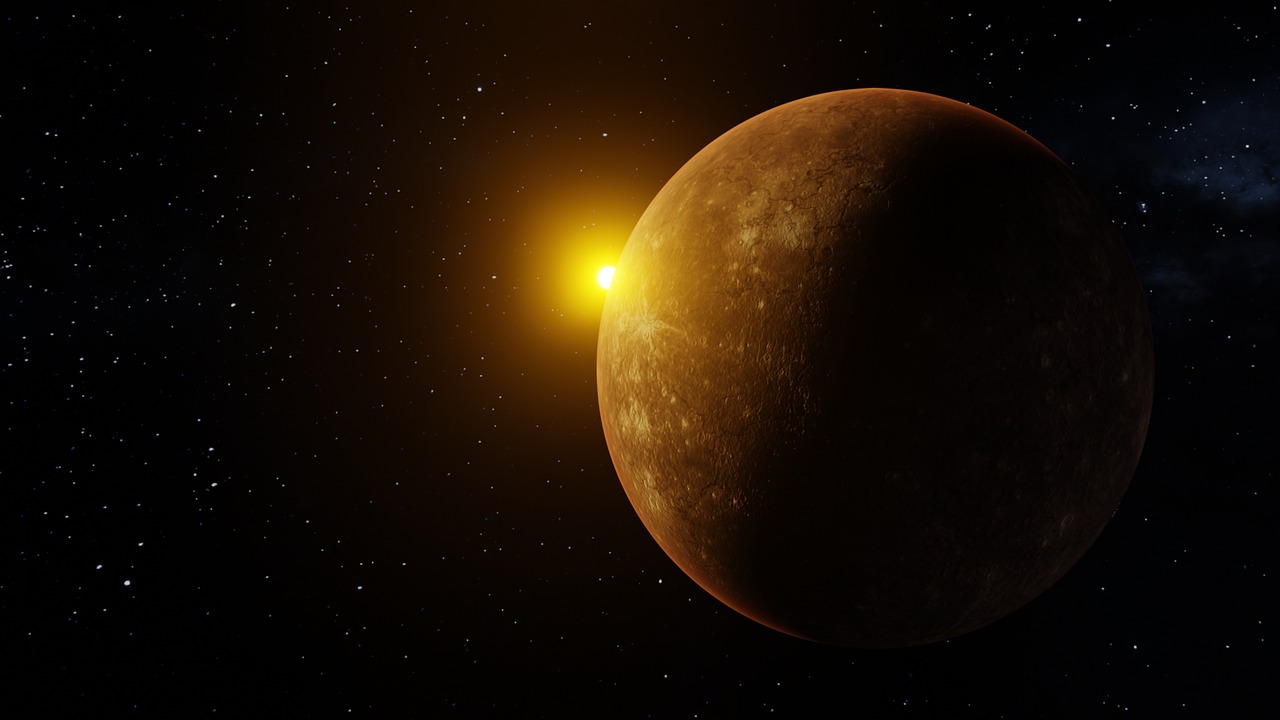Should we reconsider the geological history of Mercury? A new study suggests that the planet may have once exhibited conditions conducive to habitability, as evidenced by the presence of vast salt glaciers hidden beneath its hostile surface.
Mercury, when discussed in the context of supporting or having supported life, appears to be entirely ruled out. Overheated by the Sun, with a mere 46 million kilometers separating it from the star, this small, arid planet lacking an atmosphere is far from providing the necessary conditions for life to emerge.
At least on the surface. The situation could be vastly different beneath the surface, as suggested by a recent study published in The Planetary Science Journal. These new findings disrupt our understanding of habitable zones in planetary systems, significantly expanding the possibilities in astrobiology.
Glaciers of Salts Releasing Volatile Elements

Mercury’s distance from the Sun places it outside the habitable zone, which, for our Solar System, lies between Venus and Mars. With temperatures exceeding 400°C in direct sunlight, the chances of finding liquid water are nonexistent. However, we now know that some planets could harbor favorable habitable conditions despite an extremely hostile surface environment, as exemplified by the hidden oceans on the icy moons of Jupiter and Saturn. Yet, unlike these moons, Mercury, apart from having a large iron core and a thin silicate envelope, does not hide any oceans of liquid water. So, where have scientists identified potentially life-sustaining conditions?
In glaciers… of salt! Contrary to previous beliefs that Mercury’s crust lacked any volatile components, data from the Messenger probe’s mission between 2011 and 2015 shattered this certainty. Sulfur, chlorine, sodium, and potassium were detected on the planet’s surface, suggesting volatile elements emanating from the subsurface, hinting at the presence of a hidden “reservoir” beneath the planet’s surface.
A More Favorable Environment for Life in Mercury’s Subsurface?
The new study reveals that these levels of volatile elements could be much more extensive than previously thought. The results suggest that volatile element emissions are more significant in areas of highly chaotic terrain, resembling the morphology of Martian glaciers. The analysis of these terrains, especially at the poles, indicates that they are large salt deposits that trapped volatile elements during their formation. Buried for over a billion years in Mercury’s subsurface, these specific glaciers would have been exposed to the surface due to asteroid impacts.
There are terrestrial analogs to such glaciers, such as the saline and arid deposits in Chile’s Atacama Desert. We know that such environments can represent niches with favorable habitability conditions for extremophile organisms.
New Perspectives in Astrobiology

Based on modeling, researchers suggest that these glaciers formed during the collapse of a transient, warm primordial atmosphere at the beginning of Mercury’s history, before the Late Heavy Bombardment episode. Water from the atmosphere, emitted by volcanic activity, would have condensed on the surface during the planet’s long and cold nocturnal periods due to its slow rotation. This scenario implies the temporary presence, approximately 4 billion years ago, of shallow and highly saline seas. The subsequent rapid evaporation and loss of water into space would have led to the formation of these immense salt deposits within the crust.
This new geological history could add appeal to Mercury and its analogs elsewhere in the Galaxy in the search for extraterrestrial life.
